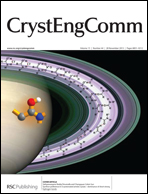Effects of NaNbO3 concentration on the relaxor and dielectric properties of the lead-free (Na0.5Bi0.5)TiO3 ceramics
Abstract
In this study, different NaNbO3 concentrations (abbreviated as NN) were added into lead-free (Na0.5Bi0.5)TiO3 (NBT) to form the (1 − x) NBT–x NN ceramics by using the solid-state reaction method, where x was equal to 0.1, 0.2, 0.3, and 0.4, respectively. The dielectric constant–temperature (εr–T) curves revealed that the solid solution underwent two phase transitions, from ferroelectric to anti-ferroelectric phases and from anti-ferroelectric to paraelectric phases. The εr–T curves also showed that the depolarization temperature (Td) was shifted to lower value, the Curie temperature (Tc) was shifted to higher value, and the maximum dielectric constant decreased with increasing NN concentration. The Curie–Weiss law and the modified Curie–Weiss law were used to discuss the phase transitions of the (1 − x) NBT–x NN ceramics. Dielectric study revealed that the behavior of the relaxor-type ferroelectric ceramics became more obvious as increasing NN composition was added into the NBT ceramic. As observed from the εr–T curves, the 0.8 NBT–0.2 NN ceramic revealed a higher dielectric constant and more stable dielectric constant curve.


 Please wait while we load your content...
Please wait while we load your content...